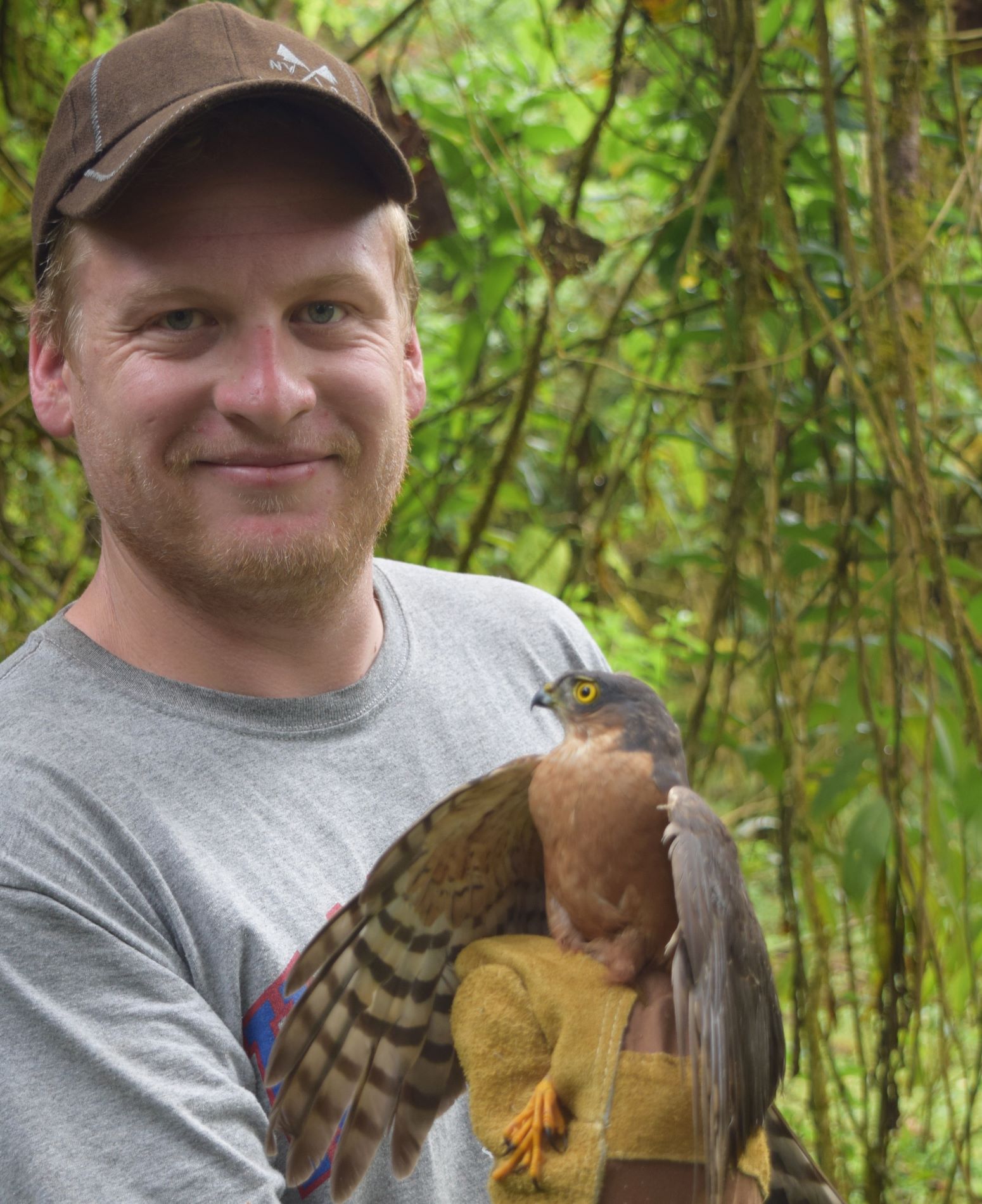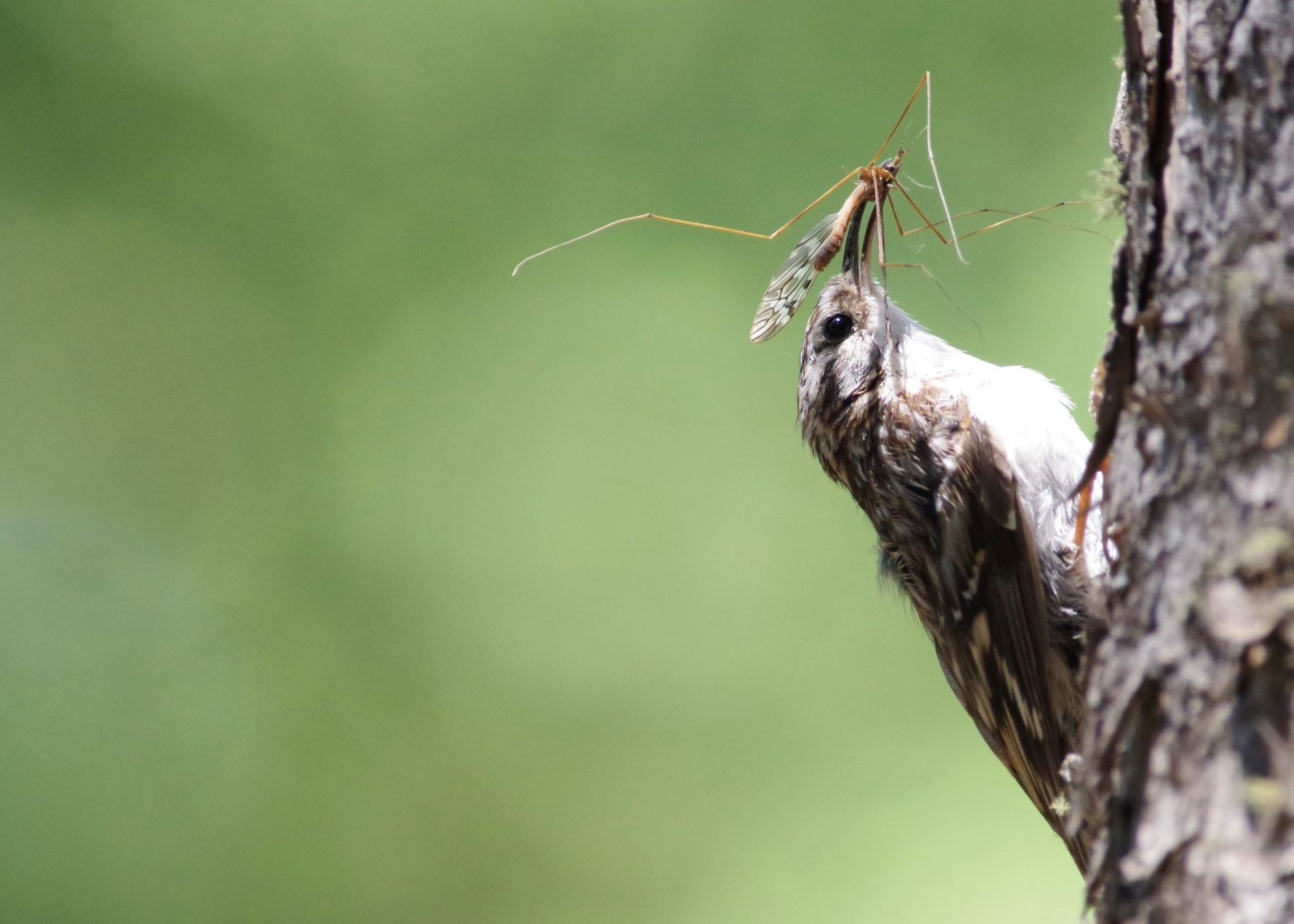Discover the latest news, explore exhibits and connect with the natural world. Visit Catalyst Online
Members receive free admission to the Museum 364 days a year! Become a Member
Take your Museum journey home with you. Visit the Museum Shop
Diving into the Intricate Mechanisms that Drive Diversity on Earth

Imagine you are hiking through a forest of tall old growth trees. You are studying the deeply fissured bark of a thick Colorado spruce and then suddenly the bark seems to move with a sort of skuttle. Upon further examination, you realize the moving bark is a small, unassuming bird creeping up the tree using its stiff tail as a support and its thin curved bill to carefully extract insects from cracks in the bark. This bird, the Brown Creeper (Certhia americana), might seem ordinary at first glance, but this unassuming creature holds extraordinary secrets about how genomes evolve. Through the study of this North American songbird, Museum scientists are discovering an incredible dance between genetics and evolution that deepens our understanding of the forces shaping the diversity of life.
My collaborators Dr. Joseph Manthey, associate professor at Texas Tech University, and Dr. John Klicka, retired curator at the Burke Museum of Natural History, and I have been studying the genetics of the Brown Creeper for over 15 years. Our first studies of Brown Creeper genetics revealed that with its widespread distribution across North America the species encompasses seven genetically distinct populations that have evolved in isolation, and these populations are on separate evolutionary trajectories perhaps on their way to becoming unique species of their own. These early studies revealed that the Brown Creeper presents a unique opportunity to study how genomes change over time.

Director of Zoology & Health Sciences and Curator of Ornithology Garth Spellman releases a bird in the Snowy Range in southern Wyoming in July 2017. (Photo/ Rick Wicker)
Evolution is not a uniform process. Different parts of the genome can evolve at different rates, influenced by factors like natural selection, genetic drift and gene flow. But understanding how these processes interact to shape the genome has been a challenge—until now. In a new study, Dr. Manthey and I delved into the genome of the Brown Creeper to uncover the secrets of its evolutionary history. By sequencing the entire genome of several individuals from the seven distinct populations, we discovered that the Brown Creeper's genome is a patchwork of evolutionary stories, each shaped by a multitude of genetic processes.
One of the most fascinating findings from our research is the role recombination plays in shaping the bird's genome. Recombination is a process where genetic material is shuffled during reproduction, creating new combinations of genes. This process is not uniform across the genome; some regions experience high rates of recombination, while others experience very little. In the Brown Creeper, areas of the genome with low recombination rates showed strong phylogeographic structure—meaning that the genetic differences between populations were consistent with their geographical distribution. In contrast, regions with high recombination rates showed more complex patterns, with some populations evolving rapidly and others more slowly.

Joseph Manthey, associate professor at Texas Tech University, with Rufous-Breasted Sparrowhawk in Bale Mountains, Ethiopia. (Photo/ Patrick Bradley)
These findings suggest that recombination plays a crucial role in how different populations of the Brown Creeper have diverged from one another. In regions of the genome with low recombination, genetic differences accumulate more quickly, leading to more pronounced differences between populations. In high-recombination regions, however, the story is more complicated. We found that populations with smaller effective sizes—essentially, the number of individuals contributing genes to the next generation—evolved more rapidly in these regions. This rapid evolution could be driven by the effects of natural selection or genetic drift, where random changes in gene frequencies become more pronounced in smaller populations.
But what does this mean for our understanding of genome evolution? The study of the Brown Creeper reveals that the genome is not a monolithic entity; it's a dynamic landscape where different regions can tell different evolutionary stories. The complex interplay between recombination, population size and other genetic factors creates a mosaic of evolutionary patterns that can vary even within a single species.

Brown Creeper with an insect in its bill. (Photo/ Joseph Manthey)
The Brown Creeper, with its rich genomic diversity and complex evolutionary history, serves as a powerful model for understanding the nuances of genome evolution. Its story reminds us that evolution is not a simple, linear process, but a complex interplay of forces that can shape life in unexpected ways. As Dr. Manthey and I continue to unravel the secrets hidden within its genome, the Brown Creeper will undoubtedly continue to teach us about the intricate mechanisms that drive the diversity of life on Earth.
This browser is no longer supported.
We have detected you are using a less secure browser - Internet Explorer.
Please download or use Google Chrome, Firefox or if using Windows 10, you may also use Microsoft's Edge browser.